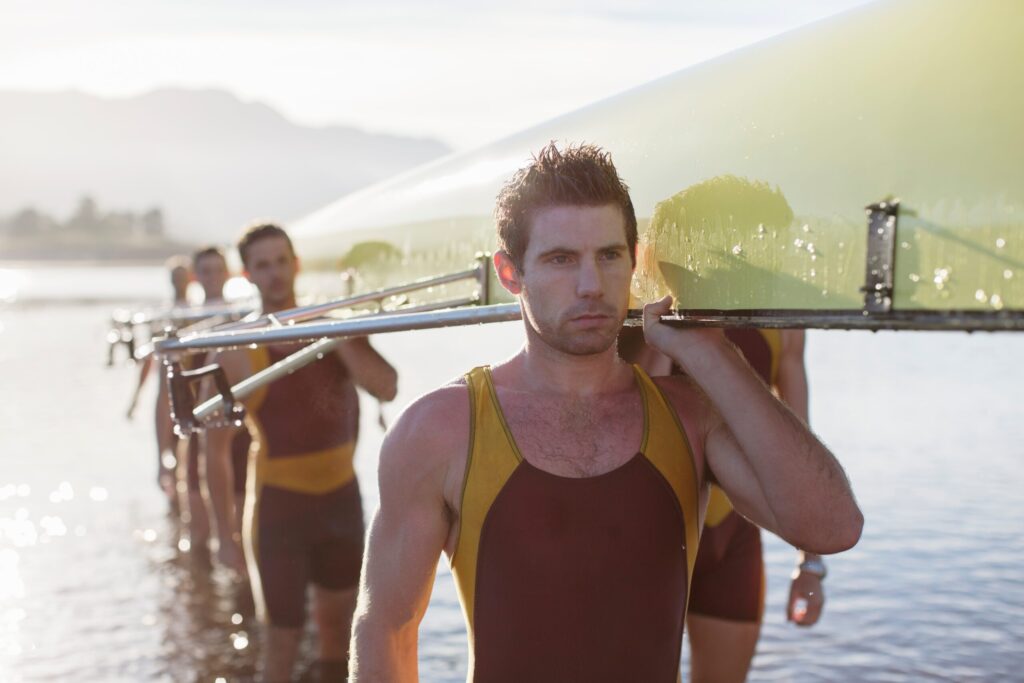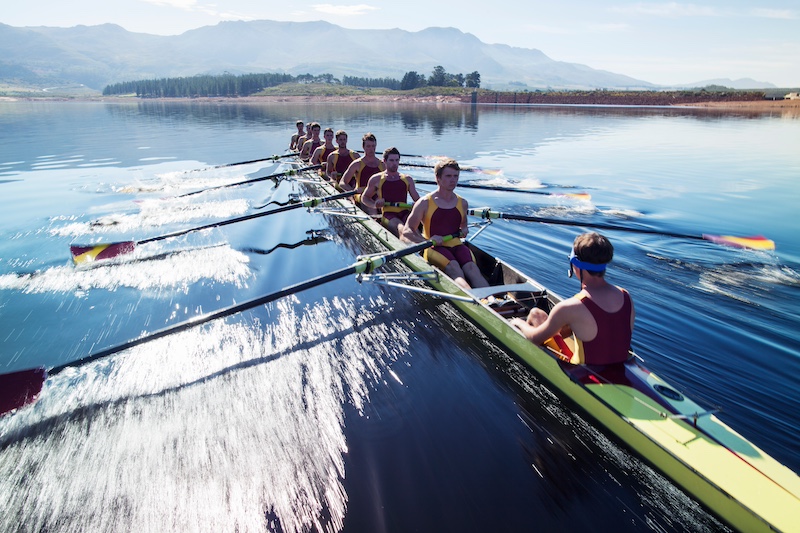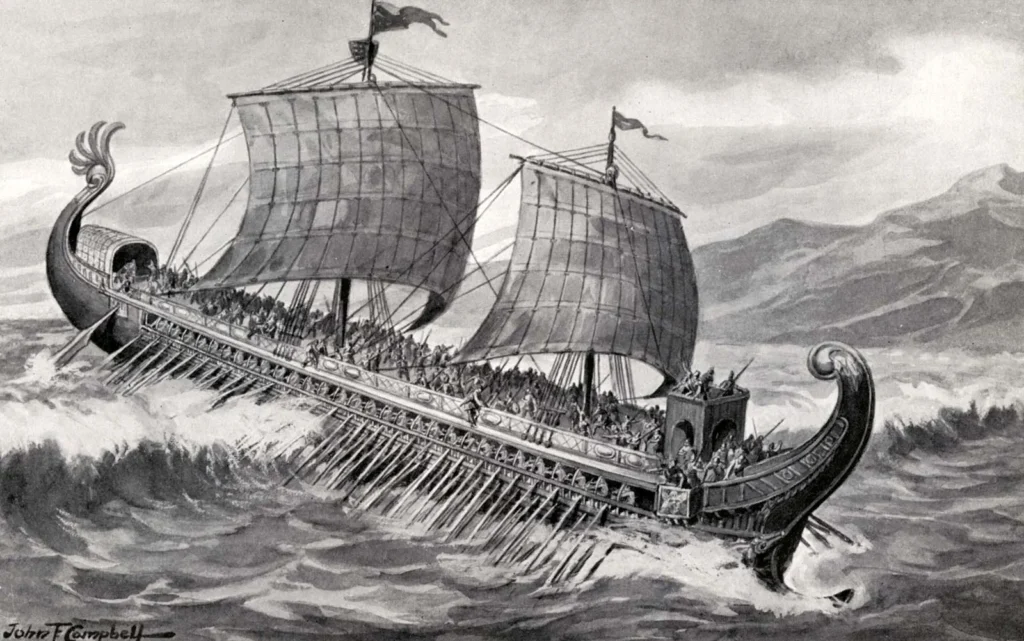The drivers of consensus
The idea in brief
Growth isn’t just about great products or market entry—it’s about managing the friction that comes with scale. As organizations expand, keeping everyone aligned becomes a tougher challenge. Success hinges on balancing influence, judgment, and incentives to keep the team rowing in sync. By mastering these elements, companies can navigate the complexities of scaling without losing momentum.

The conundrum of growth
What business doesn’t want to grow? Growth is among the most important levers of valuation. In many cases, the drive for growth is the number one thing that keeps general managers up at night.
The type of barriers to growth at each stage of the life of a company are different: on one end of the spectrum, early stage start-ups need to build credible products that demonstrate market fit in order to have a chance at growth. On the other end, firms in established, more mature markets with limited “white space“ have to fight for business against fierce competition. Between these two ends lies a vast “valley of death”, in which many businesses stumble and die of exhaustion.
Many theories will focus on products, markets, pricing and so on in order to navigate this dangerous zone. There is a robust toolchain of frameworks and solutions in modern management theory to deal with these topics, and with a well-planned capital runway and good execution, poor products can be improved and new markets can be entered by a nimble organisation. If a product is sub-standard, we can double down on customer feedback to incrementally get it up to scratch. If we need to enter a new, fast-growing market, we can give the team on the ground both the tools and independence needed to break into this new environment. Indeed, the business press is full of accolades and war stories of companies that overcame such hurdles through adept shifting of priorities and mindset.
So why do organisations struggle to overcome these barriers when encountered? We believe that the barriers to growth, and the tools to overcoming them, are well-understood. The issue in most cases is a managerial problem: steering the organisation in an effective way around these barriers and achieving coordination. This problem becomes bigger as an organisation grows.
To adapt to change, including growth, an organisation as a system usually needs to change priorities. However, the larger an organisation is in terms of headcount, the more difficult it is to change its priorities. Our experience and findings indicate that this is because once a group consensus has been achieved through the configuration of three “forces” – influence, judgment and incentives – it is very difficult to realign. Managers who target growth need to consider these three drivers explicitly and carefully in their planning to maximise their chances of success.
To understand this further, we need to consider in depth the idea of consensus and its relationship to scale and growth. The sport of rowing is a good starting point.
The consensus unit
Exhibit 1:
A rowing eight

Source:
Shutterstock
Scalar stress
The effect of group size on consensus and the quality of a group’s output on narrow, closed-end tasks has been studied by psychologists, sociologists and organisational scientists at least since the 1950ies.
Early on, experimental studies suggested that the objective quality of the output of consensus units increases with group size increasing from two to six. However, when group size increases above six members, consensus is harder to achieve, and the emergence of a leader that coordinates the information flow and dynamics of the group becomes more pressing. In groups of over twelve members, average member participation was found to decline.
Quantitatively, if one were to view people as being in one of two states, “agreeable“ and ”disagreeable”, the fact that group performance seems to peak at a group size of six (and assuming that the quality of group output scales proportionally with group size) suggests that, as a high-level rule of the thumb, people are a priori 85% likely to be agreeable. The actual percentage is less important than the implication that the majority of people are largely wired for agreeability, which makes sense: we need each other to survive, and its hard for habitually disagreeable people to fit into a group over the long run.
The above findings led the anthropologist Gregory Johnson to the concept of scalar stress in 1982. The idea is that, despite most people being generally amenable in group contexts, the likelihood of someone being out of consensus, that is, “not doing their job” or just plain disagreeing with the consensus, increases as group size grows. This has historically been a frictional force on the growth of human groups under an egalitarian consensus-based model. Throughout the longest period of human history, the hunter-gatherer stage, the most common response was group fissioning: the members of the group dissatisfied with the consensus left.
In simple terms, egalitarianism does not scale well. The groups that were able to find a solution to this problem, usually through luck, were the ones that scaled. By far the most common solution in early history was abandoning egalitarianism in favour of the influence exerted through a top-down command structure, often based on coercion by a strongman-leader or “big man”.
Coercion, however, is not an acceptable management approach in the modern era. Therefore, we have to look elsewhere for examples of how the problem of scalar stress is solved effectively in a relatively egalitarian context.
“We’re going to need a bigger boat”
The bigger the rowing boat, the more likely a crew member will make a mistake. Even if, conceptually at least, rowing is a simple task, it’s hard to get eight people to row well together. It gets harder the bigger the crew. So how was co-ordination achieved in a trireme (Exhibit 3), the most popular type of battleship in the Mediterranean during classical times, that had about 170 oarsmen, and what insights could this offer us about modern organisations?
Exhibit 3:
A Roman trireme

Source:
Britannica
The popular misconception is that the oarsmen of classical galleons were slaves that were maintained in place and rhythm through coercion, that is, fear of the whip. However, that is not true. Ancient mariners had figured out that the best way to power ships was not with slaves, but free men. This had been established a very long time before the Romans: Homer’s Odyssey, a text from the 8th or 7th century BC that narrates events likely from the 12th-13th century BC, describes Odysseus’s pentecoter, a predecessor of the trireme, as having about 50 oarsmen, all free men. This was likely a practice adopted from the Phoenicians, the earlier inventors of the pentecoter.
Furthermore, since the time of Homer, the crews were incentivised not just by patriotism or loyalty to their leader, but also by a share of the profits or loot from the journey, that is, equity in the enterprise. Therefore, the trireme system did not rely on coercion. Instead of the whip, the desire for profit put the oarsmen in their seats, and a piper that kept time according to the orders of a rowing master was the “metronome” that synchronised them to a rowing rhythm.
Nevertheless, even with this coordination signal, it was difficult for 170 men to pull together. Extensive training was also needed. Trireme rowers trained not just for strength, but also for the intense heat, sweat and smell of their positions below deck. Despite the noise and fear of battle, they had to maintain discipline and quiet, to save their strength and attention for commands. Therefore, one could not man a trireme by picking people off the street and asking them to row in sync with the piper’s rhythm. Hence, crews had to undergo gruelling training to learn to work as one.
In summary, centuries of experimentation through trial and error by the people of the Mediterranean had given the Romans the trireme as an organisational system, not just the type of ship. This system comprised not just shipbuilding technology, but also component subsystems of influence, incentive and crew judgment development mechanisms that overcame the problem of scalar stress for maritime crews of free men nominally equal under the law:
- The influence system was the chain of command from the captain, to the oarmaster, to the piper and the oarsmen
- The judgment of the crew on how to operate their stations was developed over extensive, tedious training based on an established tradition
- The incentive system was a share in the equity to the spoils of victory in battle
If any of these components of the system failed, the trireme would not operate effectively, whether the ship itself was of the highest quality or not.
The drivers of consensus
A rowing eight cannot grow into a trireme, but an organisation can grow from eight to 150 people and more. As groups scale, scalar stress emerges, and egalitarian consensus becomes more difficult to maintain. The groups that succeed at scaling evolve a mix of hierarchical influence structures, specialisation and training into a specific range of tasks and appropriate incentives as they grow.
Different organisations or social groups ”blend” the use of these three drivers differently (Exhibit 4). Militaries focus more on hierarchy and explicit, detailed training around clear operating procedures, while hedge funds rely more on sharp incentives. These drivers define the character of the organisation and shape the priorities of each individual in it. When the drivers change, so do the priorities. These priorities then set how work is performed, physical assets are used and financial or other objectives are met.
Exhibit 4:
The Arion model of the organisation system and drivers of consensus
| Driver | Description | Examples | Organisational Toolchain | Skills Domain |
|---|---|---|---|---|
| Influence | Political power shapes behaviour. It’s driven by emotional responses to relationships—whether persuasive, voluntary, or coercive. |
|
Interpersonal relationships, communication, org charts, reporting lines, town hall meetings. | Charisma, empathy, leadership “soft” skills. |
| Judgment | Experience and training shape judgment. Professionals (e.g., engineers, doctors) assess facts and make informed decisions. Often influenced by cultural background. |
|
Education, experience, training, and clear processes. Organisations assess judgment when hiring. | Problem-solving, reasoning, experience. |
| Incentives | Monetary or equivalent rewards and penalties. These can include formal compensation or informal “shadow” incentives like misuse of assets or bribes. |
|
Compensation structures: salary, bonuses, benefits—anything convertible to cash. | Commercial mindset, integrity, conscientiousness. |
Source:
Aethon
In our experience, it is surprising how many modern organisations fail to rigorously think through all of these three drivers when considering growth or any type of change. Change requires not just plans but implementation in action, and that more often than not requires a change in priorities. These three “forces” are the signals that steer individual, day-to-day priorities in the organisation. Organisations that succeed use them consciously and together.
Conclusion
In the end, the challenge of growth isn’t just about market fit or product quality—it’s about mastering the dynamics of influence, judgment, and incentives within your organization. Like the ancient trireme, success depends on more than just individual strength; it requires a finely tuned system where every part works in concert. As your organization scales, recognize that the key to overcoming scalar stress is not in forcing alignment, but in smartly crafting the structures that make consensus achievable, even as complexity grows.
Sources and further reading
- Cummings, L. L., George P. Huber, and Eugene Arendt. ‘Effects of Size and Spatial Arrangements on Group Decision Making’. The Academy of Management Journal 17, no. 3 (1974): 460–75.
- Johnson, Gregory A. ‘21 Organizational Structure and Scalar Stress’. In Theory and Explanation in Archaeology: The Southampton Conference, edited by Colin Renfrew, M. J. Rowlands, Barbara Abbott Segraves, Theoretical Archaeology Group (England), University of Southampton, and University of Sheffield, 389–421. New York: Academic Press, 1982. https://api.semanticscholar.org/CorpusID:18765035.
- Cook, Arthur Bernard, and Wigham Richardson. ‘Triremes’. The Classical Review 19, no. 7 (1905): 371–77.